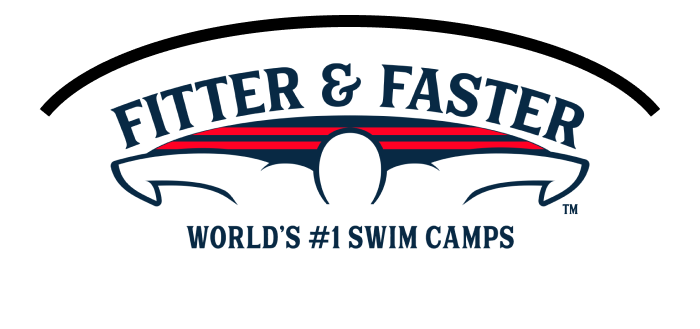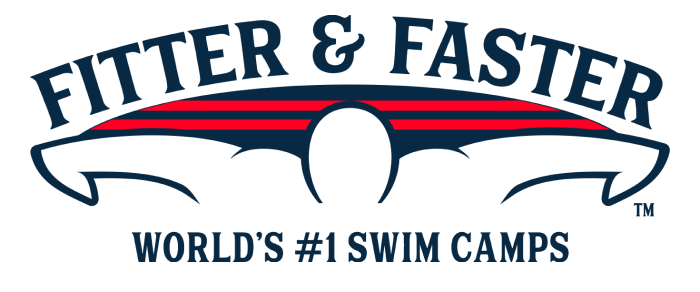Past Clinic: 2023 Essentials of Sprinting For Ages 10 to 12!
The St. James
6805 Industrial Rd,
Springfield,
VA 22151
A description of what was covered at this past clinic is below the upcoming clinics.
Upcoming Swim Clinics and Camps
Within 250 miles of Springfield, VA.
Past Clinic
Introduction
Fitter & Faster is returning to The St. James in Springfield, VA to produce a 2-day swim camp on September 16 & 17, 2023! This web page is for the camps for swimmers ages 10 to 12 years old. Click here for the swim camp page for swimmers ages 13 & older.
2023 ESSENTIALS OF SPRINTING SWIM CAMP (Ages 10 to 12)
-> DAY 1 (Sept 16, Saturday): Establishing Speed
-> DAY 2 (Sept 17, Sunday): Racing Skills
Scroll down for details on the curriculum!
-> Availability in each session is limited to ensure the best learning experience!
-> SAVE when you purchase the “Full Camp Bundle” for your swimmer!
START TIMES FOR BOTH CAMPS: Check in 9 AM, Camp 9:15-11:45 AM
Suggested Participants
Our top priority is to provide a world-class learning experience for all participants at all of our camps. This camp has sessions for swimmers ages 10 to 12. Participants will range from one-year of competitive swimming experience to AAAA times and faster. If you are the parent of a child under the age of 10 and would like for your child to be considered for the younger sessions of this camp, please complete this questionnaire. Please click here if you are looking for the 13 & over camp page!
Curriculum
Essentials of Sprinting
Swimmers ages 12 & under are fortunate to still have 50's to race in every stroke at just about every swim meet! Now is the time for swimmers to establish and cultivate habits to swim their shorter races as fast as possible with good technique that will position them for success as they mature. This swim camp will be led by elite clinician: Marina Spadoni!
Day 1: ESTABLISHING SPEED (Sept 16)
At this session your swimmer will practice the essential components to high performance sprinting.
- BODY POSITION: A competitive swimmer’s body position is the key to fast swimming. Most swimmers are NOT hydrodynamic in the water - and that has a big effect on how fast they “allow” themselves to swim - especially as they get older. Let’s find the right body position for your swimmer.
- STROKE LENGTH: Lengthening their stroke will enable your swimmer to “catch” and hold onto more water to propel them as they swim. Whereas a short stroke is inefficient and not sustainable for very long. The clinicians will work with participants on this important skill for fast swimming.
- TEMPO: When sprinting short races young swimmers often tend to take too many strokes (“spin their wheels”) and not “hold onto the water”. At this camp we will find the appropriate tempo to maximize their own personal speed.
Day 2: RACING SKILLS (Sept 17)
On Day 2, your swimmer will apply the skills that we practiced on the first day of this camp to important segments of every sprint race, including the moment your swimmer pushes off the wall; breakouts; finishes and all out sprinting!
- BREAKOUTS: Many swimmers add movement within their breakout that creates drag and destroys all of the power created during their underwaters. Participants will work on timing their breakouts to accelerate to explode into each lap.
- SPRINTING: On Day 1 your swimmer worked on body position, tempo and length of stroke. Today we are going to apply those skills to swimming “all out” on top of the water with efficiency and power.
- WALLS!: Approaching the wall at top speed in preparation for the fastest turn is vital. Swimmers will work on techniques to get in and out of every wall faster!
- FINISHES: Dropping time and even winning or moving up a few spots in the results can all come down to the last stroke! A well-timed finish at full speed, with full-arm extension and head down can make a difference of up to a full second in a race! Your swimmer is going to learn how to take advantage of the finish to drop time!
- SPRINTING APPLICATION: Swimmers at this session will work on applying their newly developed skills during racing scenarios. As with all the other segments of this camp, the clinicians will provide feedback for your swimmer to take home and apply at upcoming practices and meets.
ASK QUESTIONS
Swimmers and parents are invited to ask the clinicians questions during a Q&A session. Gain insight into their training regimen, diet and nutrition, and recovery tactics.
WATCH THE CLINICIANS
Observe clinicians swim at full speed and demonstrate a progression of perfectly executed drills to achieve powerful, efficient and fast swimming.
PUT YOUR SKILLS TO THE TEST
Swimmers will get to practice what they've learned by taking their stroke to your top speed with some of the best swimmers and coaches in the world! They'll work on holding onto their form while challenging themselves.
Take a photo, get autographs, and chat with your clinicians!
Inquisitive, Educated Swimmers are Faster Swimmers! Sign up today!
Search all of our clinics...or request a clinic in your area







